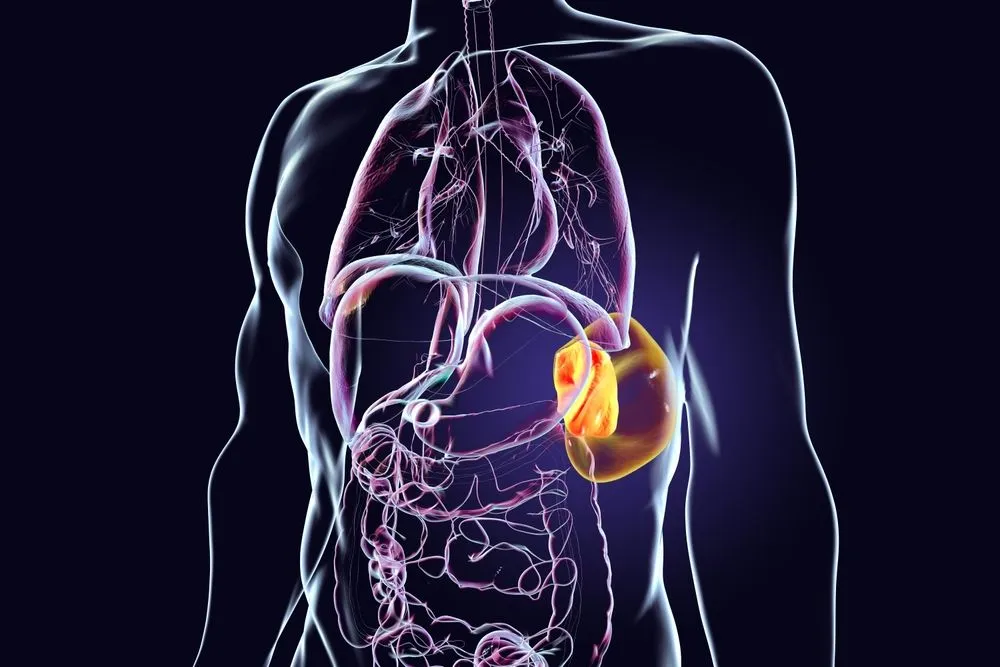How Is Myelofibrosis Diagnosed?
Myelofibrosis is a type of cancer that affects the bone marrow's ability to generate new blood cells caused by scar tissue within the marrow. A precise myelofibrosis diagnosis requires blood, bone marrow, imaging, genetic tests, physical examination by a medical professional, and directed questioning to discover details that can lead to an accurate diagnosis.
What are the Blood Tests for Myelofibrosis?
The blood tests are usually performed by a nurse who draws blood with a needle from a vein, usually in the arm. This blood sample is then sent to the lab to be analyzed according to your doctor’s indications. The most common blood tests indicated when analyzing myelofibrosis are:
- Complete blood count (CBC): This test reports the number of red blood cells, white blood cells, and platelets in your blood. In myelofibrosis, the number of these cells can be abnormal.
- Blood smear: A blood sample is examined under a microscope. Myelofibrosis can cause changes in the appearance of your blood cells.
- Blood chemistry: This test may be indicated to assess the metabolism of blood cells with bilirubin and uric acid, amongst other values. It can also be used to look for inflammation indicators like lactate dehydrogenase.
What are the Bone Marrow Tests for Myelofibrosis?
The bone marrow aspiration and biopsy tests involve taking a small sample of the bone marrow in your hipbone to be examined under a microscope. This test will confirm a myelofibrosis diagnosis because, in this condition, the bone marrow is often fibrous and scarred.
What are the Genetic Tests for Myelofibrosis?
The genetic analysis of the abnormal blood or bone marrow cells looks for mutations related to myelofibrosis, such as JAK2, CALR, and MPL. Your attending oncologist indicates these tests, and each of them is performed differently in a lab, but the sample required can be a blood sample or a bone marrow biopsy. The genetic tests that analyze the fibrous tissue or abnormal blood cells are:
- Immunohistochemistry
- Flow cytometry
- FISH (Fluorescent In Situ Hybridization)
- Karyotype
- Cytogenetics
- NGS (Next Generation Sequencing)
- PCR (Polymerase Chain Reaction)
The goal of these tests is to find out what has caused the scarring tissue to form in the bone marrow and if there aren’t other causes that may explain it after thorough questioning by your doctor. They will determine which tests are more efficient in finding the problem.
What are the Imaging Tests for Myelofibrosis?
When doctors suspect myelofibrosis, sometimes, before performing a bone marrow biopsy, they will ask for an imaging test to look at the internal structure of the bones or organs they might feel differently in the physical examination. For example, the spleen, when enlarged, is palpable.
- Ultrasound: This is indicated to analyze the spleen, which is commonly enlarged in myelofibrosis. It can measure the size, shape, and circulation of the blood vessels.
- Computed Tomography (CT) scan: This test creates detailed pictures of your body. It can help identify any abnormalities in your spleen or liver, and sometimes, it can help determine the extent of bone marrow affected by fibrosis. And is sometimes useful when performing a bone marrow biopsy.
- X-ray: It’s the oldest diagnostic imaging method; for myelofibrosis diagnosis, it can be used to examine parts of the body where the bone seems affected.
- Magnetic resonance imaging (MRI): Can help to measure the damage from myelofibrosis in the bone marrow, as it can show the marrow inside bones and the soft tissues around, including blood vessels and nerves.
Diagnosing myelofibrosis involves a comprehensive evaluation that includes blood tests, bone marrow tests, and imaging tests, along with a detailed physical examination and medical questioning by a doctor. The diagnostic tests help identify the characteristic signs of myelofibrosis, such as abnormal blood cells, fibrous bone marrow, and an enlarged spleen. The results of these tests, along with your symptoms and medical history, are used to make a diagnosis.
Expanding knowledge for all patients and discovering the best time to start treatment is possible thanks to research. This is why it is very important to continue active research on myelofibrosis so that patients’ outcomes can be improved.
Just Getting Started with Myelofibrosis?
You're in the right place. This is your beginner’s guide to understanding what myelofibrosis is, what symptoms to watch for, and what treatment options may look like.
Want to learn how others are living with MF and what research is on the horizon?
Keep exploring HealthTree News for real patient stories, expert insights, and weekly updates on the latest in care and science.
Source:
Myelofibrosis is a type of cancer that affects the bone marrow's ability to generate new blood cells caused by scar tissue within the marrow. A precise myelofibrosis diagnosis requires blood, bone marrow, imaging, genetic tests, physical examination by a medical professional, and directed questioning to discover details that can lead to an accurate diagnosis.
What are the Blood Tests for Myelofibrosis?
The blood tests are usually performed by a nurse who draws blood with a needle from a vein, usually in the arm. This blood sample is then sent to the lab to be analyzed according to your doctor’s indications. The most common blood tests indicated when analyzing myelofibrosis are:
- Complete blood count (CBC): This test reports the number of red blood cells, white blood cells, and platelets in your blood. In myelofibrosis, the number of these cells can be abnormal.
- Blood smear: A blood sample is examined under a microscope. Myelofibrosis can cause changes in the appearance of your blood cells.
- Blood chemistry: This test may be indicated to assess the metabolism of blood cells with bilirubin and uric acid, amongst other values. It can also be used to look for inflammation indicators like lactate dehydrogenase.
What are the Bone Marrow Tests for Myelofibrosis?
The bone marrow aspiration and biopsy tests involve taking a small sample of the bone marrow in your hipbone to be examined under a microscope. This test will confirm a myelofibrosis diagnosis because, in this condition, the bone marrow is often fibrous and scarred.
What are the Genetic Tests for Myelofibrosis?
The genetic analysis of the abnormal blood or bone marrow cells looks for mutations related to myelofibrosis, such as JAK2, CALR, and MPL. Your attending oncologist indicates these tests, and each of them is performed differently in a lab, but the sample required can be a blood sample or a bone marrow biopsy. The genetic tests that analyze the fibrous tissue or abnormal blood cells are:
- Immunohistochemistry
- Flow cytometry
- FISH (Fluorescent In Situ Hybridization)
- Karyotype
- Cytogenetics
- NGS (Next Generation Sequencing)
- PCR (Polymerase Chain Reaction)
The goal of these tests is to find out what has caused the scarring tissue to form in the bone marrow and if there aren’t other causes that may explain it after thorough questioning by your doctor. They will determine which tests are more efficient in finding the problem.
What are the Imaging Tests for Myelofibrosis?
When doctors suspect myelofibrosis, sometimes, before performing a bone marrow biopsy, they will ask for an imaging test to look at the internal structure of the bones or organs they might feel differently in the physical examination. For example, the spleen, when enlarged, is palpable.
- Ultrasound: This is indicated to analyze the spleen, which is commonly enlarged in myelofibrosis. It can measure the size, shape, and circulation of the blood vessels.
- Computed Tomography (CT) scan: This test creates detailed pictures of your body. It can help identify any abnormalities in your spleen or liver, and sometimes, it can help determine the extent of bone marrow affected by fibrosis. And is sometimes useful when performing a bone marrow biopsy.
- X-ray: It’s the oldest diagnostic imaging method; for myelofibrosis diagnosis, it can be used to examine parts of the body where the bone seems affected.
- Magnetic resonance imaging (MRI): Can help to measure the damage from myelofibrosis in the bone marrow, as it can show the marrow inside bones and the soft tissues around, including blood vessels and nerves.
Diagnosing myelofibrosis involves a comprehensive evaluation that includes blood tests, bone marrow tests, and imaging tests, along with a detailed physical examination and medical questioning by a doctor. The diagnostic tests help identify the characteristic signs of myelofibrosis, such as abnormal blood cells, fibrous bone marrow, and an enlarged spleen. The results of these tests, along with your symptoms and medical history, are used to make a diagnosis.
Expanding knowledge for all patients and discovering the best time to start treatment is possible thanks to research. This is why it is very important to continue active research on myelofibrosis so that patients’ outcomes can be improved.
Just Getting Started with Myelofibrosis?
You're in the right place. This is your beginner’s guide to understanding what myelofibrosis is, what symptoms to watch for, and what treatment options may look like.
Want to learn how others are living with MF and what research is on the horizon?
Keep exploring HealthTree News for real patient stories, expert insights, and weekly updates on the latest in care and science.
Source:
Trending Articles
Get the Latest Myelofibrosis Updates, Delivered to You.
By subscribing to the HealthTree newsletter, you'll receive the latest research, treatment updates, and expert insights to help you navigate your health.
Together we care.
Together we cure.
3x Faster.




